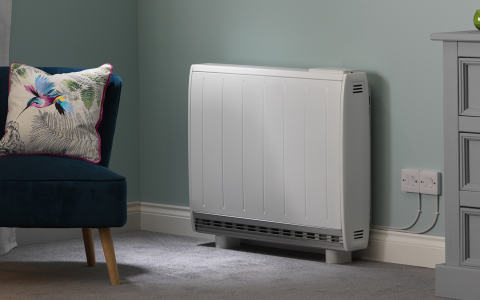Building Regulations in England & Parts L, F and O
With the transitional period now over, the updated 2022 Building Regulations Part L, Part F, and the new Part O, became legally enforceable for all new residential projects.
This is the biggest regulatory change the construction sector has seen in the last 40 years and a stepping stone in our transition away from fossil fuel systems toward decarbonised homes and the electrification of heat - and ultimately, the Future Homes Standard. This shift will impact the way we design buildings and specify technologies.
Have you decided which technologies to specify to achieve compliance for your next residential project?
The new English Building Regulations came into law on the 15th of June 2021. For projects with existing planning permission there is one year transitional arrangements period that applies on plot-by plot basis.
The updated Part L outlines the four compliance metrics for new developments: primary energy target, carbon emissions target, fabric energy efficiency target, and minimum standards for building fabric and building services.
The ventilation system choice under the updated Part F is linked to aritightness as we look to increase indoor air quality. New Part O offers modelling to help mitigate the risk of overheating in buildings.
We designed a simple guide to the changes to Part L and Part F, and the new Part O, and discuss what they may mean for your project.
Our range of HVAC solutions aim to provide future proof technologies to building projects over various sectors.
Request our presentation on Building Regulation changes that answer the most frequently asked questions.
Latest News
Our news section cover building regulations, what the changes to Part L, F, and the new Part of O entail, and what this means for HVAC specification.

Safety first, sensible use of portable heaters
At Dimplex we design every electric heater with safety front and centre, and used correctly they should be much safer than other types of heating. With the weather turning so cold this weekend it is timely to remember some basic safety advice that should be applied whenever using portable electric heating.

Dimplex all set for another decade supporting local children’s hospice
Charity fundraising initiatives for local hospices Naomi House & Jacksplace have crossed the decade mark for Southampton-based Dimplex. This support is more important than ever as the need for, and demands placed upon, the hospices increase.

Dimplex: gas safety stats show why private landlords should turn to electric
Electric heating must be the ‘sensible’ choice for private landlords, according to heating expert Dimplex, after new findings show more than a fifth of privately rented properties have an unsafe gas appliance.











